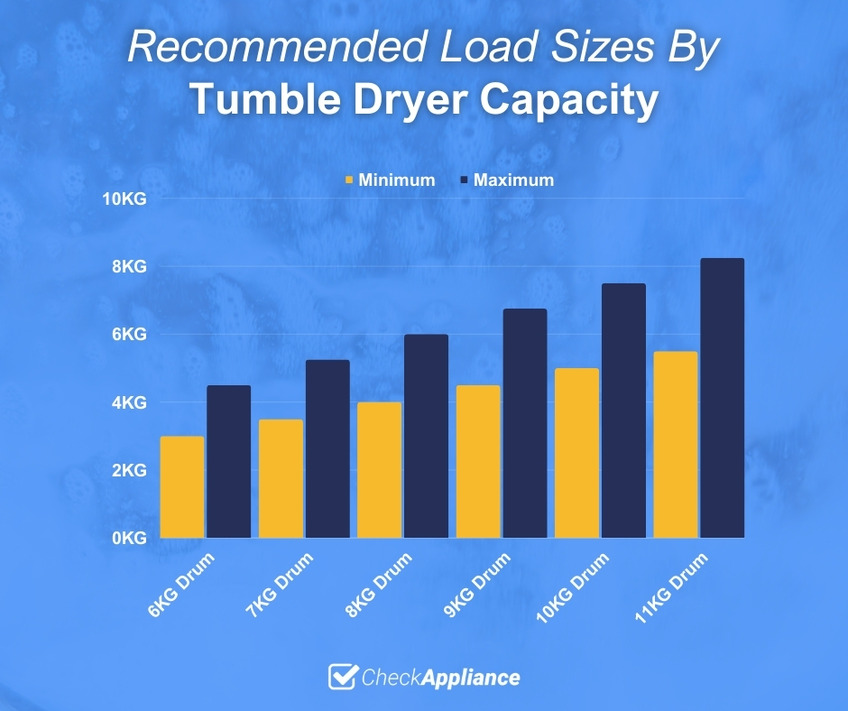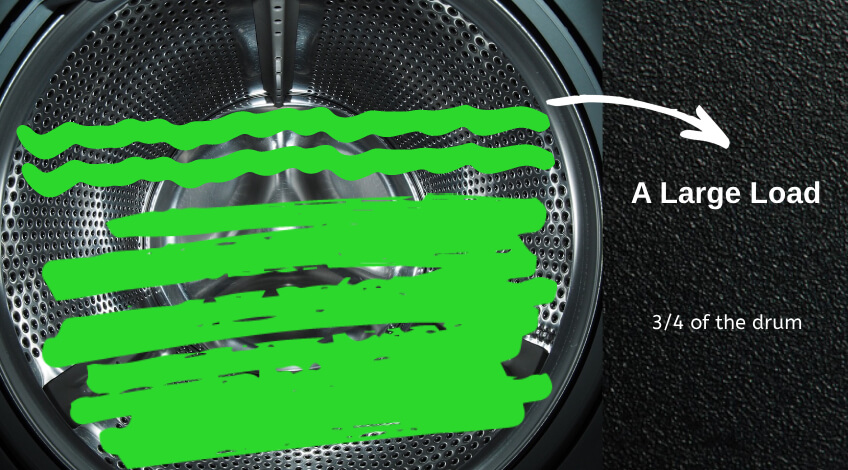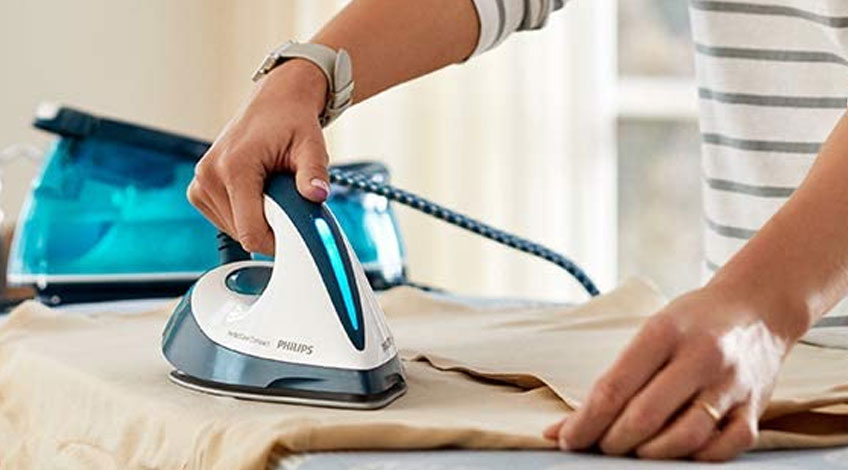
How To Tell If Your Tumble Dryer Is Overloaded
Overloading your tumble dryer may seem like a quick fix to get all your laundry done in one go, but it can lead to problems both for your clothes and the appliance itself.
When you stuff your dryer beyond its limits, you risk damaging essential components like the motor, drum, and belt. To prevent this, you need to look for signs that your dryer is too full, such as a noisy drum or an extremely dirty filter.
Let’s look into the signs of an overloaded dryer, plus the simple solutions in this informative guide!
Are You Overloading Your Tumble Dryer?
Tumble dryers come with a specified weight capacity, which determines the amount of laundry they can efficiently handle. For instance, many residential dryers have an 8KG capacity, but that doesn’t mean you should fill them to the brim.
In fact, it’s recommended to use only about 1/2 to 3/4 of the dryer’s capacity for a smooth drying cycle. So, if you have an 8KG tumble dryer, aim to dry 4 to 6 KG of laundry at a time to avoid overloading it.
Overloading your dryer can lead to costly repairs or even force you into buying a new appliance.
To avoid this, here’s how to check if you’re pushing your tumble dryer to its limits:
Check The Weight Of The Load

The simplest way to assess whether your tumble dryer is overloaded is by checking the weight of the laundry.
Ensure you don’t go beyond 3/4 of the dryer’s capacity to prevent excessive strain on its motor and components. You can easily determine this by weighing your laundry basket before washing and tossing it into the dryer.
Here’s a quick reference table to help you determine the minimum and maximum load per capacity:
| Tumble Dryer Capacity | Recommended Load Weight |
|---|---|
| 10KG | 5 – 7.5 KG |
| 8KG | 4 – 6 KG |
| 6KG | 3 – 4.5 KG |
SEE ALSO: Does The Tumble Dryer’s “Capacity” Mean Dry Or Wet Laundry?
Eyeball The Drum Space
If you’d rather not use a scale, another method is to eyeball the drum space in your tumble dryer. If it looks like it’s already stuffed to the brim, it’s a clear sign of overloading.
To ensure efficient drying, aim to keep the drum no more than 3/4 full. This allows air to circulate properly, resulting in faster and more effective drying.

SEE ALSO: How Many Clothes Can You Fit In A 10KG Washing Machine?
Listen For Loud Banging Noises
An audible indicator of an overloaded tumble dryer is the presence of loud banging noises when the spinning cycle starts.
These thuds and rattles occur because the dryer struggles to handle the weight and the clothes may become tangled inside the drum. This imbalance can be damaging to the dryer over time.
If you hear such noises, it’s best to stop the dryer, remove some items, and redistribute the load evenly. By doing so, you not only protect your dryer but also ensure that your clothes are dried without damage.
Look Out For Wrinkles And Creases
Overloading your tumble dryer can be harsh on your garments. When clothes lack the space to move freely in the drum, they end up squeezing and bunching together, leading to more wrinkles and creases.

If you find yourself spending more time ironing and steaming your laundry, it’s a clear sign that you’re overloading the dryer. Reduce your load size to give your clothes the breathing space they need to dry without excessive wrinkling.
Track Changes In The Drying Time
An overloaded dryer takes longer to dry a load of laundry because there’s not enough room for air circulation!
Prolonged exposure to heat can damage your clothes and strain your appliance. Also, extended tumble dryer use can significantly increase your energy bills!
So, when you notice that your clothes are taking longer to dry than usual, it’s time to stick to the recommended load size.
Doing multiple smaller loads is far better than ending up with damp clothing or, worse, an overheating appliance.
Check Your Filter For Lint Buildup
Overloading your tumble dryer can result in more lint than usual, with the filter possibly becoming full and even some lint ending up on your clothes. This is a clear sign that you’re overloading the dryer.
To avoid this issue, stick to smaller loads that fill up at least half of your machine’s capacity.
WARNING: Always clean your lint catcher after each use, as lint buildup can be a fire hazard.
Tumble Dry Responsibly!
Remember, your tumble dryer has limits for a reason. Overloading it may offer a short-term convenience, but in the long run, it’s not worth the potential damage to your appliance and the wear and tear on your clothes.
By following these guidelines, you’ll ensure efficient, safe, and cost-effective drying while extending the life of your trusty tumble dryer. So, keep those laundry loads manageable, and enjoy the benefits of a well-functioning appliance and wrinkle-free clothes!
SEE ALSO: Tumble Dryer Smells? (how to keep it fresh)
Frequently Asked Questions
You should aim to fill your tumble dryer no more than 3/4 of its capacity for efficient and safe drying.
Signs of an overloaded dryer include loud banging noises, longer drying times, wrinkled clothes, and lint buildup on the filter.
Tumble dryer weight capacity varies, but a general guideline is to use about 1/2 to 3/4 of the dryer’s capacity. For example, if you have an 8KG dryer, aim to dry 4 to 6 KG of laundry at a time.
The lifespan of a dryer can vary, but on average, they can last anywhere from 10 to 15 years with proper maintenance.
Clean the lint trap after each use by removing the lint manually. This helps prevent lint buildup and reduces the risk of fire hazards.




